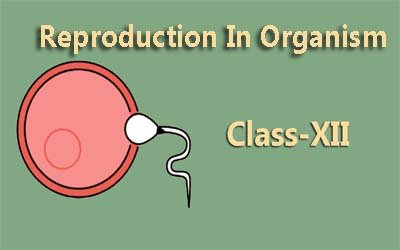Breathing and Exchange of Gases - Class 11
All living things need oxygen to survive, and plants are no exception! But unlike us animals with lungs, plants have a different way to breathe. Here's a quick look at how gas exchange works in plants for Class 11: The Need for Air: Plants use oxygen (O₂) for cellular respiration, just like us. They also release carbon dioxide (CO₂) as a waste product during this process. No Lungs, No Problem: Plants don't have lungs, but they have tiny pores on their leaves called stomata (singular: stoma) and similar structures on stems called lenticels. These pores act like microscopic air vents for gas exchange. The Breathing Process: Taking in Oxygen: During the day, stomata open to allow oxygen from the atmosphere to diffuse into the plant. Releasing Carbon Dioxide: At the same time, carbon dioxide produced by cellular respiration diffuses out of the plant through the stomata and lenticels. The CO₂ Twist: This released CO₂ is actually used by plants themselves for photosynthesis during the day! It's a cool recycling trick. Factors at Play: Light, temperature, and water availability can all influence how much a plant "breathes" by affecting the opening and closing of stomata. The Takeaway: Even though breathing in plants seems simpler than in animals, it's an essential process for their survival and growth. It's all about taking in what they need and getting rid of waste! সব জীবের বেঁচে থাকার জন্য অক্সিজেনের প্রয়োজন, এবং গাছপালাও এর ব্যতিক্রম নয়! প্রাণীদের থেকে ভিন্ন, উদ্ভিদের শ্বাস-প্রশ্বাসের পদ্ধতি আলাদা। ক্লাস 11-এর জন্য কারখানাগুলিতে গ্যাস এক্সচেঞ্জ কীভাবে কাজ করে তা এখানে দ্রুত দেখুনঃ বাতাসের প্রয়োজনীয়তাঃ উদ্ভিদ আমাদের মতো কোষীয় শ্বাস-প্রশ্বাসের জন্য অক্সিজেন (O2) ব্যবহার করে। তারা এই প্রক্রিয়া চলাকালীন বর্জ্য পণ্য হিসাবে কার্বন ডাই অক্সাইড (সিও 2) ছেড়ে দেয়। কোন সমস্যা নেই, কোন সমস্যা নেইঃ উদ্ভিদের ফুসফুস নেই, তবে তাদের পাতায় ছোট ছোট ছিদ্র রয়েছে যা স্টোমাটা (একবচনঃ স্টোমা) এবং কান্ডের উপর অনুরূপ কাঠামো রয়েছে যাকে লেন্টিসেল বলা হয়। এই ছিদ্রগুলি গ্যাস বিনিময়ের জন্য মাইক্রোস্কোপিক বায়ু ভেন্টের মতো কাজ করে। শ্বাস-প্রশ্বাসের প্রক্রিয়াঃ অক্সিজেন গ্রহণঃ দিনের বেলায়, বায়ুমণ্ডল থেকে অক্সিজেনকে উদ্ভিদে ছড়িয়ে দেওয়ার জন্য স্টোমাটা খোলা থাকে। কার্বন ডাই অক্সাইড মুক্ত করাঃ একই সময়ে, কোষীয় শ্বসন দ্বারা উত্পাদিত কার্বন ডাই অক্সাইড উদ্ভিদ থেকে স্টোমাটা এবং মসুর ডালের মাধ্যমে ছড়িয়ে পড়ে। CO2 টুইস্টঃ এই মুক্ত CO2 আসলে উদ্ভিদ দ্বারা দিনের বেলা সালোকসংশ্লেষণের জন্য ব্যবহার করা হয়! এটি একটি চমৎকার পুনর্ব্যবহারযোগ্য কৌশল। খেলার কারণগুলিঃ আলো, তাপমাত্রা এবং জলের সহজলভ্যতা স্টোমাটার খোলার এবং বন্ধকে প্রভাবিত করে একটি উদ্ভিদ কতটা "শ্বাস নেয়" তা প্রভাবিত করতে পারে। গ্রহণযোগ্যঃ যদিও প্রাণীদের তুলনায় উদ্ভিদের শ্বাস-প্রশ্বাস সহজ বলে মনে হয়, এটি তাদের বেঁচে থাকার এবং বৃদ্ধির জন্য একটি অপরিহার্য প্রক্রিয়া। এগুলি হল তাদের যা প্রয়োজন তা গ্রহণ করা এবং বর্জ্য অপসারণ করা!
English
Last updated
Wed, 27-Nov-2024



















